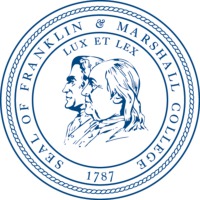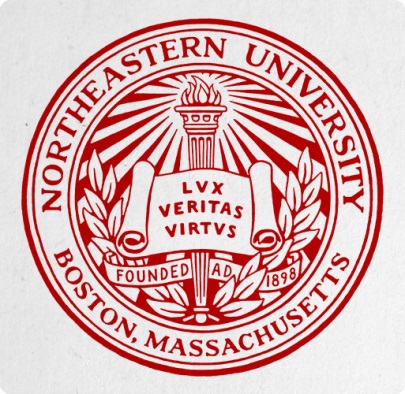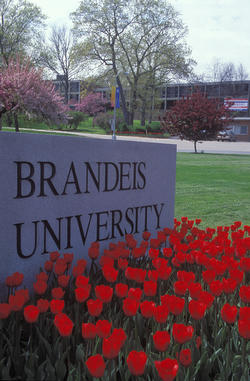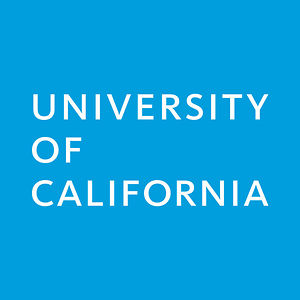
Blog posts on college admissions by Arjun Seth
Visit to US Colleges: Part 3 - University of Washington
From most locals and also students on campus, the sense one gets is that it is very well reputed as one of the top 10 research universities in the US with large research endowments/ funds. This also means that there are many research opportunities on campus.
Visit to University of Washington, Seattle campus
UW (pronounced ‘UDub’) is located West of Seattle right next to Puget Sound, the large water body (ocean?) in Seattle. The west is almost entirely the University District with the ‘W’ sign dominating all the streets, signages, shops etc. I was awestruck during the campus visit – it is truly breathtaking and actually hard to imagine how large until one sees it! This is an enclosed campus spread over 650 acres, massive in size with several buildings mostly classical old European architecture and few newer buildings like the Husky Union Building or ‘HUB’ and the computer sciences building. Lot of open green spaces like the liberal arts quad, a fascinating Harry-Potter- like library are some of the highlights. The student population is around 42,000 of which around 5,600 freshmen join every year. There is great diversity, especially Asian students - Chinese, Japanese, Korean, Indian. I managed to meet and interact with 4 Indian students/ freshmen from Mumbai, Delhi, Bangkok and Hyderabad and got a lot of information and sense of life on campus from them. These kids seemed extremely happy with their choice of UW. The Indian kids told me that everyone on campus knows them and they are friendly with most people. They felt size has not been an adjustment issue with them at all.
From most locals and also students on campus, the sense one gets is that it is very well reputed as one of the top 10 research universities in the US with large research endowments/ funds. This also means that there are many research opportunities on campus.
Professor to student ratio is not too great in year 1 with anything between 100-300 in a class, but thereafter from year 2, we were told, the ratio is around 20:1. Apart from professors, there are teaching assistants who help students clarify doubts post class. I attended one such class on imperialism in south east Asia in the 1300-1700s taught by a teaching assistant. Class size was around 45-50 students. On discussing with students, it seems teaching quality is high and academic rigor is also strong. In the first two years there is a wide range of subjects to choose from – to be able to select a major and get the major of your choice in year 3, one has to complete all pre-requisites in year 1 and 2. This isn’t always easy. Students who have taken IB are given an advantage and get a one year credit provided all pre-requisite courses that count towards the major of your choice were taken. This could well mean completing the undergrad in 3 years! At the same time, if GPA drops or minimum requirements are not met, this is an issue. The wide subject choice in the first two years also means that options are huge for deciding on areas of your interest e.g. if you decide to do psychology and later major in informatics, this is a great choice as it links computer sciences with psychology and behaviors in IT use, social networking etc. Computer Science and Informatics are very great majors (so I was told) and isn’t easy to get.
I spent time with the Admissions Office, Sabrina, who is married to an Indian, and was extremely helpful. She organized most of the day for me. She also talked a bit about financial aid and that if a student explores the various scholarships available and makes a case, fills the required forms, meets aid counselors, aid is possible. Also, on campus jobs like in the office, restaurants and other options are many. I checked on post campus graduation related placements, job placements and the issue of getting a strong recommendation from Professors. All students I spoke to felt that this was not at all the case as year 2 onwards, class size was small depending on the subject/ specialization and Professors knew you well enough to write good strong personalized recommendations. Placement options within Seattle seemed good – Microsoft, Amazon, Google, Boeing and many others. Also, outside Seattle, the UW reputation seemed strong for placements. There are over 350 study abroad programs to choose from and counselors who help you find the right program. UW also has an off-site campus in Rome. Also heard a brief talk on peace corps – for students who enroll, the peace corps which requires working on social/ community development projects in developing countries during summer or other periods, results in a two year international development experience on your resume and foreign language experience. The travel is fully paid for and funds are available (upto USD 7000) to plan such an experience.
Sports facilities were fantastic with very huge recreation/ sports centers, indoor pools, courts etc. Options to play soccer are there if you try and prove your skills. Sports is also big in Seattle as a city with huge games in the new massive stadiums for Soccer, Baseball etc. UW students get major discounts on everything in town – Games/ matches, public transportation (which is excellent) and other places.
Residence tour was great – it seems that there is a mix of old buildings from the 1960s and brand new ones. Old ones are slowly being torn down and being made from scratch in the most modern materials, finish and are quite state of the art. The West Campus residences were the most preferred especially Alder Hall, Elm Hall – both are brand new and were completed in fall 2012 – they have double rooms with kitchen areas, private loos. Common areas have fancy cooking spaces, every floor has lounges and common areas for hanging out, watching TV etc with spectacular views of the water and bridge. The Mercer Court and another similar one coming up have 5 room apartments which house 10 kids and 2-3 loos, a massive kitchen, lounge and great views (may not be in all apartments), but it will be around USD 300 more per annum compared to the others. Both these will be ready in fall 2013 so kids who move there will have brand new accommodation. To ensure space in these newer buildings (including Elm and Alder), most important to register and indicate your housing preference between May 8-15 – it will be based on first come first served. Eating options on campus are several and apparently great for non-vegetarians. One side of the University is flanked by University Avenue or ‘Av’ which is full of shops, cafes and restaurants and a great haunt for college students. On social scene, students told me that a heck of a lot happens on campus but also plenty of stuff to do outside campus like concerts in town, hiking trips, skiing.
Seattle is flanked by mountains on both sides, the Cascades and the famous ‘Mount Ranier’, Lake Washington, Union Lake, Puget Sound and Pacific Ocean. Vancouver is only a two hour drive. It’s a two hour flight to LA and lesser to SFO. I spoke to several students and cab drivers about the infamous rainy Seattle weather. They all said that it’s a hoax staged by locals to keep outsiders out of the gorgeous Pacific North West. It does rain for many days of the year but is light and keeps clearing up. No heavy rain and no wind chill, no extreme cold. Its mild winters not lower than minus 2 degrees and summers are cool around 80-90 degree F. It may not be sunny too often but its good weather and the rain does not prevent or dampen any outdoor sports or activities.
Overall, what a campus, what a city and I think, what an experience it will be – truly a big US university experience in a big US city!
Pros: strong reputation as best research university in US, great campus and housing, good for psychology, many course options, mild weather (although its grey and rains many weeks of the year, it never gets too cold) and great city with proximity to Vancouver and other great areas, 1 year credit for IB students
Cons: very large university, class size huge in first year
Visit to US Colleges: Part 2 - Franklin and Marshall College
The academic experience seemed very intimate and individualized.
Visit to Franklin & Marshall, Lancaster, Pennsylvania
F& M is located in Lancaster town around 3 hours drive from DC – the college campus is astounding – red brick buildings on a green sprawling campus, beautiful trees, aesthetic architecture. FM has a reasonably diverse student community. There seemed to be quite a few Indian kids from Mumbai and Delhi although I didn’t meet any.
The description of the academic experience from one of the profs who held the info session was very interesting – a personalized and intense learning yet creative experience designed to make the student want to learn and go deeper into a topic – he gave examples of how ‘chocolate’ could be the topic and could be handled by different professors in subjects ranging from psychology to economics to international trade to law etc – why people like it, how it is manufactured, how cocoa is procured from countries in Africa, are fair trade practices applicable etc.. The academic experience seemed very intimate and individualized. Classrooms we peeped into seemed small groups with a close experience with a prof. Around 51 majors are offered but the topics were engaging and facilities to enhance the learning experience were super like live Sensex projections on screens etc. There is a two year foundation course before you declare your major. Language learning for three semesters is compulsory.
Another distinguishing factor of a small liberal arts school is that profs know each of their students really well and are aware who comes to class, who is behind, who needs help – they ensure that the student gets the support they need. I witnessed some interactions between students and professors - they were intimate and close bonds, almost like being in a boarding school where the entire campus is your extended home with most students and professors known to you. Apparently, alumni and advisors also help students with internships placements and other learning experiences, job advice etc. Mentoring from prefects is also very much part of the system.
Global summer programs sounded very interesting and FM has tie ups with colleges in Paris, London, Cape Town and in collaboration – almost 50% students study abroad for a semester either alone or in a group.
When you join you are assigned a house to which you belong for the entire time you are in college. Houses have their own buildings, common rooms, prefects, budgets and are in a sense what you are affiliated to. For sports teams, tryouts and recruitments are possible mid-term. The sports facilities were great here too – lot of indoor stuff although soccer had both outdoor fields and an option to play indoor as well. Supposed to be a very popular sport on campus – it’s a NCAA Div III college.
Housing/ residence halls were very spacious and well designed. 2 students sharing a room. In the senior years, some students opt to move out close to the campus. Dining are seemed very chilled out with many many options of eating – food seemed available all the time – while we were walking around at 1130 am, students were eating (not sure if it was breakfast or lunch!) but I believe they close only for an hour in a day. Some other great facilities we saw on campus were an IT Centre for innovation and learning; a building where a whole bunch of creative activities. Clubs were in action etc. The environment on campus was very relaxed and peaceful – students seemed to be chilled out hanging out in the college café and reading or chatting with a prof. Reminded me a lot of doon.
Lancaster is a small town – hard to compare with any place we know – The town is interesting with small cafes, shops, museums etc. Students hang out in cafes and bars near the campus – there are only few of these but students seemed quite content. The other neighboring town is Harrisburg which is a bit bigger and has a larger airport and several hotels, malls etc.it has a quaint culture – in fact nearby areas are known as ‘Amish’ or people who are living by choice in an old world of the 1800s with horse drawn carriages, hats and other cultural habits. Other neighboring cities include NY and Philly. Students seemed to say that they visit these cities once a month or two – there’s an Amtrak station right next to FM which connects by train to these cities. On weekends, students said there was a lot happening on campus – either a concert nearby or a party or salsa evening and they didn’t feel the need to go too far other than the cafes and bars near campus in Lancaster.
There was no doubt in my mind that the quality and intimacy of the education experience would be way superior to a large university – if one is content living on a nice, relaxed, fun campus and not too concerned about being away from a large city, then the outcome of this learning experience could be very rich over a 4 year period and could lead to close bonds with peers.
Pros: intimate learning experience and close bonds with peers and professors
Cons: location and weather
Visit to US Colleges: Part 1 - Northeastern University
Students were unanimous in their view that the best part of the curriculum was the unique ‘co-op’ system – students are required to do 3 stints of 6 months each in their 5 years.
Visit to Northeastern University (NEU), Boston
NEU spans both sides of Huntington Avenue and is totally a city campus, is not gated and is right on the roadside – to move around from one building to another one may need to cross the main street (with trams running in between!!). With around 29,000 students and quite a diverse student population, the campus seemed quite alive! There seem to be an increasing number of Indian kids going to NEU in recent years and they all seemed very happy. Hearing the experience from the kids first hand was a real blessing and they were truly amazing ambassadors for their Univ.
While we could not visit the academic classrooms, the buildings seemed quite modern and large and the entire university infrastructure seemed huge. One of the research centers (I think it was physical sciences) was supposed to have been built at the cost of many millions of dollars! There were also many creative spaces/ buildings for students clubs and other activities on campus. Professor to student ratio is not too great in year 1 with anything between 100-300 in a class, but thereafter from year 2, we were told, the ratio is around 20:1. Apart from professors, there are teaching assistants who help students clarify doubts post class. I didn’t get a sense of the teaching quality. I learnt from current students that they need to put in a couple of hours of work every week and on weekends but it is manageable. The choice of subjects and courses students could choose from were huge (125). Personalized attention from Profs may not be easy to get and a lot of the onus of completing work, learning and making the NEU experience count, seemed to be in your hands.
Students were unanimous in their view that the best part of the curriculum was the unique ‘co-op’ system – students are required to do 3 stints of 6 months each in their 5 years. This is like a job but during this period students get paid and don’t have to pay college fees although they are enrolled as full time students. Co-ops can be in Boston, anywhere in US or global. Students need to organize these on their own with some help from NEU. The most important part of this co-op system seemed to be that students get coached for many weeks prior to a co-op on how to apply, how to present themselves in the job market, organization cultures and how to operate in the world of work etc. Kids also told me that after each co-op they have come out very enriched. They also learn to figure what they have an aptitude for and what not. For example you may do a co-op in an insurance firm and realize it isn’t a field for you and then next co-op may be in an IT firm and you realize its more your kind of work and the next co-op you try marketing within IT sector and feel this is exactly what you wanted to do! Apart from co-op, there seemed to be a lot of emphasis on global summer programs and all students seemed to have great experiences.
I checked on athletics and men’s soccer seems popular – there are options of playing at various levels – Division 1 or intermural or varsity or club or even just for fun! Recruitment is possible even mid-term if you try out and get selected. Winters are a hindrance to playing outdoors but there are indoor practice areas. In fact, indoor sports facilities were fantastic with very huge recreation/ sports centers, indoor pools, courts etc.
We visited residence halls – the buildings were somewhat old and disappointing from inside and rooms had 2 students each in the freshmen year but for upper class onwards the accommodation seemed quite nice. There is a swanky international village which is a building for housing for only honor’s freshmen and upper class students. Dining halls seemed pretty good although the Indian students seemed sick of burgers, pizzas, pastas and were actually waiting to go home and have dal subzi (if that’s ever possible!). In their second year, some students move out of the campus and share apartments close by. There are great places close to campus fully equipped for students. What I did hear though is that the cost of living in Boston is very high – it’s an expensive city and eating out, shopping etc. can be a big dent on the pocket for parents earning in Indian Rupees!
In terms of overall location, campus is around 20 minutes from the airport – it is bang on Huntington Avenue, right next to the Newsberry and Boylston Street (like a smaller version of Oxford Street in London). There are four other college campuses in the vicinity including BU. Around 45 minutes away is another cluster of colleges like Babson etc and around 20 minutes away is MIT, Harvard etc. Apparently, students from these campuses hang out in the same bars/ streets on weekends and the networking opportunity to meet and make friends with kids from all over is certainly there.
Boston seems like an exciting city with a lot happening, culturally, professionally – proximity to New York is also an advantage. The downside, however is the lower ranking, overall reputation in the US. The weather with snow and -15 in winters (October to April) and strong windchill could be tough to manage. Mid April was supposed to be spring but it was 12 degrees and freezing!
Pros: coop system and proximity to other colleges
Cons: weather and ranking
Avneesh Newar (Brandeis ´16) talks about his freshman year at Trinity and his transfer to Brandeis
Trinity had very friendly and motivating professors. The professors have been the best part of my experience at Trinity.
Tell
me a bit about when you started thinking about going abroad, in high school ?
I was clear on a liberal arts education. My priority was studying for the SATs.
That was my priority. Later, you helped me with the colleges and essays.
The essays made it a lot more clear for me.
How did you learn about the US system through
this application process?
The US system, I learnt mostly through the SATs. You have multiple choice
exams. It's kind of like the preparation of how the education is going to be
like in America. It's very different from the 'mugging up' type of learning in
India.
How did you learn about yourself through
this application system?
I got to know more about myself in America. Staying away from family helped me
get to know my true personality. I got to know more about my likes and
dislikes. That's why I made the choice to go to Brandeis. I fit in perfectly.
Studying abroad has definitely helped me a lot.
Tell me about a defining moment about
college?
In college, you have to do all your work on your own. You don't have tuitions
there, like you have in India.
You have professors there. You can meet them whenever you want. I met them very
often. Three or four times a week. It was a fresh change from my normal
preparation procedure.
What was the Freshman writing seminar?
My topic was, "Do you think college is worth it?"
I gave the example of my great grandfather, who didn't go to college but still
became a successful businessman. Steve Jobs was another example. In America you
have to research on topics and have to write detailed papers. My instructor was
very very helpful. I met her many times and she helped me a lot.
How big was the class?
Very small. 15 people in a class. We had a lot of reading and writing. We had a course syllabus with dates.
Did you get notes?
We used to make draft before final essays. We submitted the drafts and she corrected them and we improved on them. It was very organized and I liked it very much. It was a lot of work but it was great.
What are good things about Trinity
University (even though you're taking a transfer)?
Trinity had very friendly and motivating professors. The professors have been
the best part of my experience at Trinity.
What's great about Brandeis?
Brandeis is very close to Boston. It's great to have a big city nearby. The
classes are small and you can talk to professors. It has a very good business
school so that is why I applied there. There are many Indians there. They had
great food though I had a tough time earlier because everything there was
non-vegetarian.
What are your sophomore courses?
I register in July. I will obviously choose business. I will pursue my passion
for music. Like last year, I pursued theater too, as it is one of my passions.
What do you advise school students
applying abroad?
Be ready for hard work. Be ready for exams. You have to be in line with your
work. Don't expect too many parties. Never forget your culture and your
identity. Keep in touch with family and friends. You realize how much your
culture means to you when you get there.
The US is great, but be yourself.
What do you think you will discover about
yourself later?
I'm trying to take up different form of subjects to see what I find most interesting. In the next three years I will be clear on what I want in life and that excites me.
Vanisha Wason (University of California, Berkeley ´17) looks forward to being taught by nobel laureates
Being taught by Nobel laureates and challenging myself by taking courses in fields I've never even heard of is what I'm looking forward to!
What did you find most challenging about the
college app process?
I
found it hard to manage my time between taking standardized tests, filling out
college apps, maintaining my extra curricular records, writing essays, while at
the same time studying for the board exams.
What was your SAT and Subject Tests prep
strategy?
Practice makes perfect. The key to the great scores in standardized testing
is only practicing over a period of time. And then practicing even some more.
How did your college list change over
time?
The first step to applying for college admissions is deciding whether one
will fit in better at Liberal Arts Colleges or a large University. Some people
even prefer a mix of both. For me it was large Universities. After that, in my
opinion, I think one's tentative major's reputation at the college is a major
factor. Keeping all this in mind, my list underwent a series of variations.
What advice would you give future
applicants?
Balancing school work with college apps can become very stressful and
overwhelming, but it isn't impossible. You need to prioritize, be patient and
not lose your focus till the end.
What are you looking forward to the most
about college?
Being taught by Nobel laureates and challenging myself by taking courses in
fields I've never even heard of is what I'm looking forward to!
What major/s are you considering?
I plan to major in Molecular and Cell Biology or Integrated Biology while on the Pre Med Track at Berkeley.




















